Abstract
1. The diuretic effect of the selective A1 adenosine receptor antagonist, 8-cyclopentyl-1,3-dipropylxanthine (CPX), was investigated in anaesthetized rats. 2. CPX (0.1 mg kg-1, i.v.) produced significant increases in urine flow, and the excretion rate and fractional excretion of both sodium and chloride. By contrast, CPX administration did not result in any significant change in the excretion of potassium. 3. The diuretic effect of CPX was accompanied by a transient increase in inulin clearance although p-amino-hippurate clearance was unaffected, indicating the CPX induced a temporary elevation of glomerular filtration rate but no change in renal blood flow. 4. The fractional excretion of lithium (a marker of delivery of fluid out of the proximal tubule) was also significantly increased by CPX. However, other measures of tubular function derived from lithium clearance indicated that there were no changes in the handling of sodium or water in the distal regions of the nephron. 5. CPX did not significantly alter the relationship between either free water reabsorption or free water clearance and the distal delivery of sodium, which suggests that CPX does not affect the renal concentration/dilution mechanism. 6. The results of this study show that the diuresis and increased excretion of sodium and chloride induced by CPX (0.1 mg kg-1) in the rat, occurs with only transient elevation in glomerular filtration rate and no change in renal blood flow. The primary reason for the diuresis appears to be inhibition of sodium reabsorption in the proximal tubule.(ABSTRACT TRUNCATED AT 250 WORDS)
Full text
PDF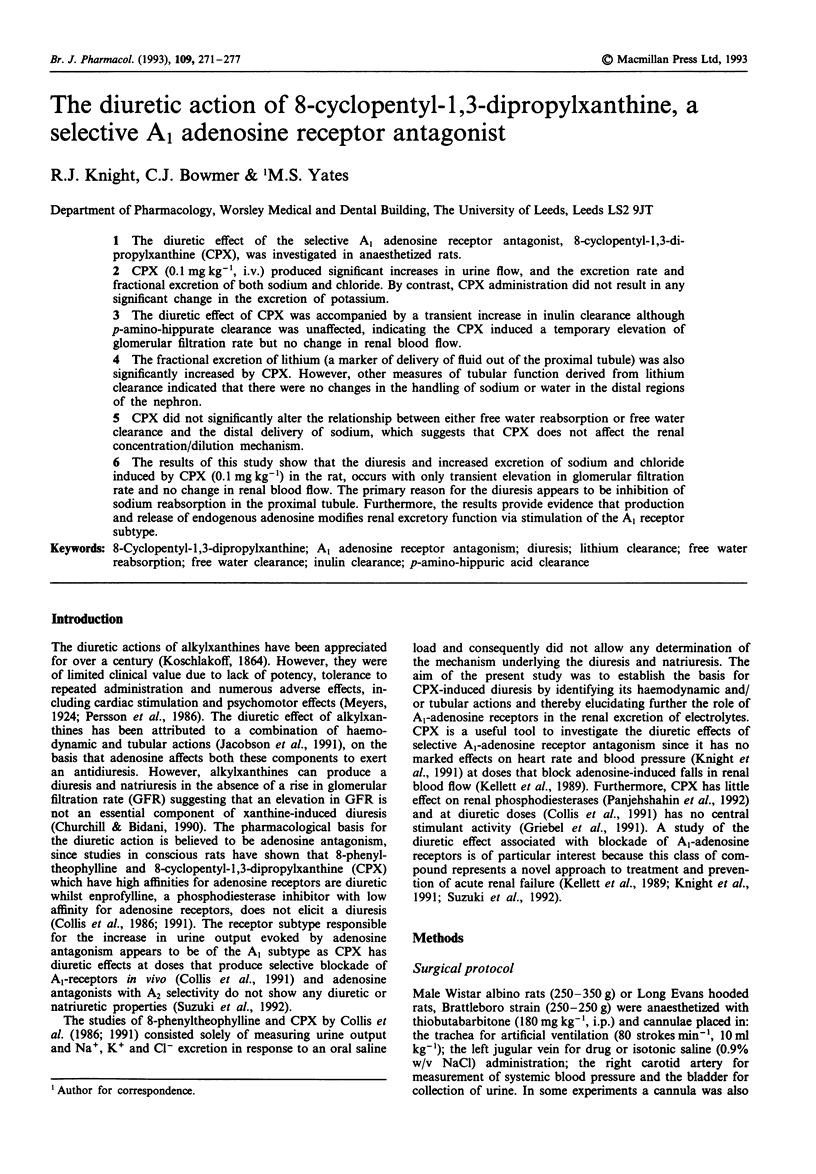
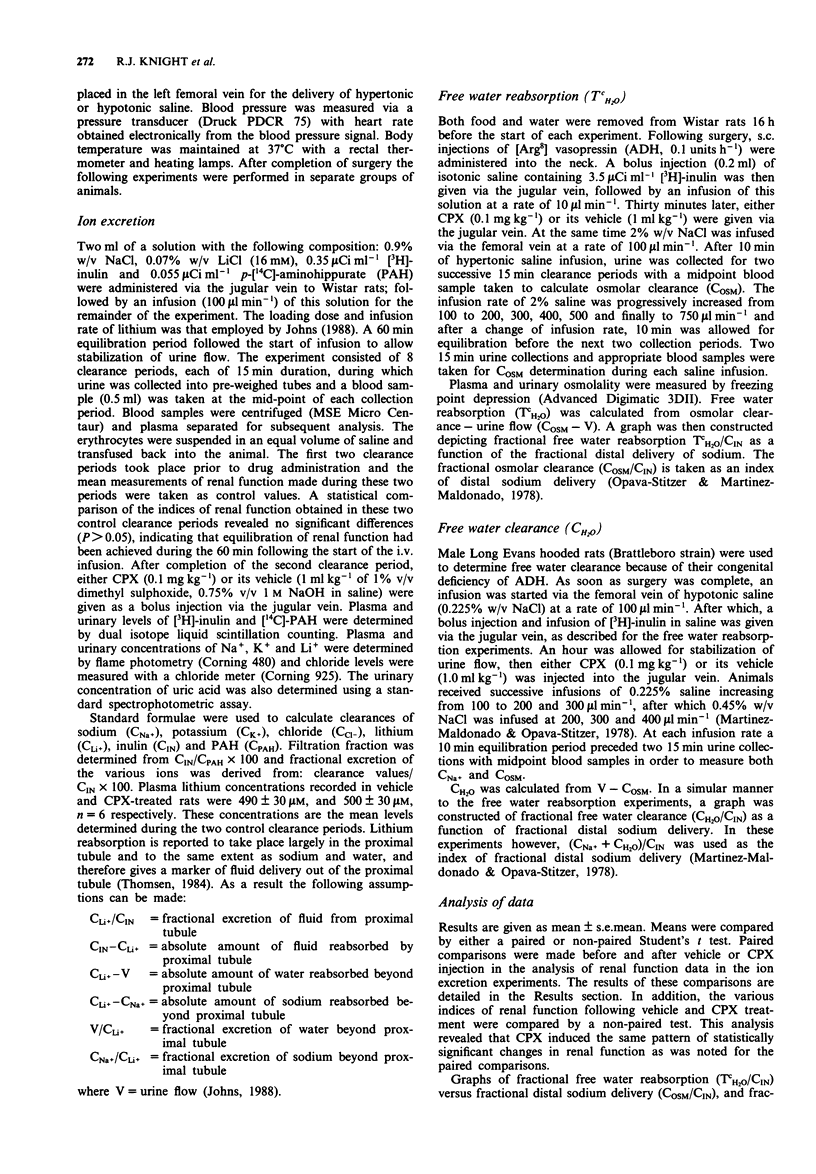
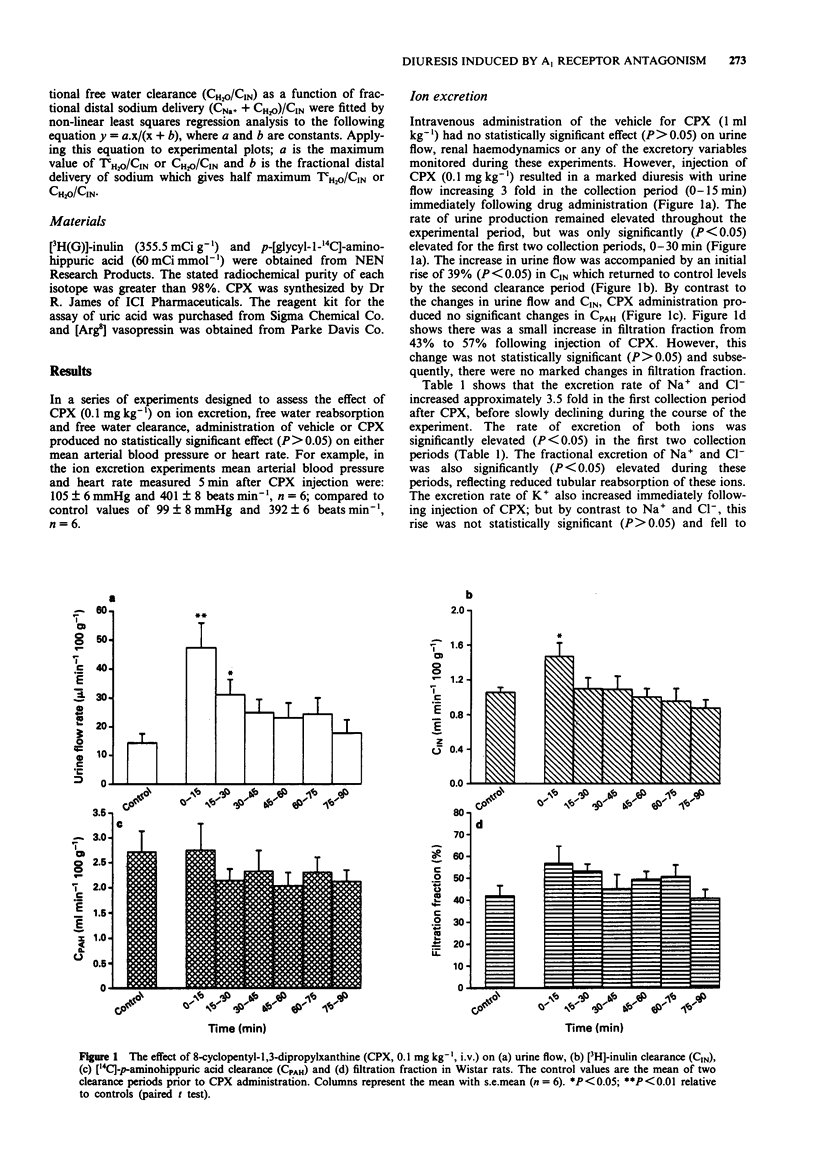
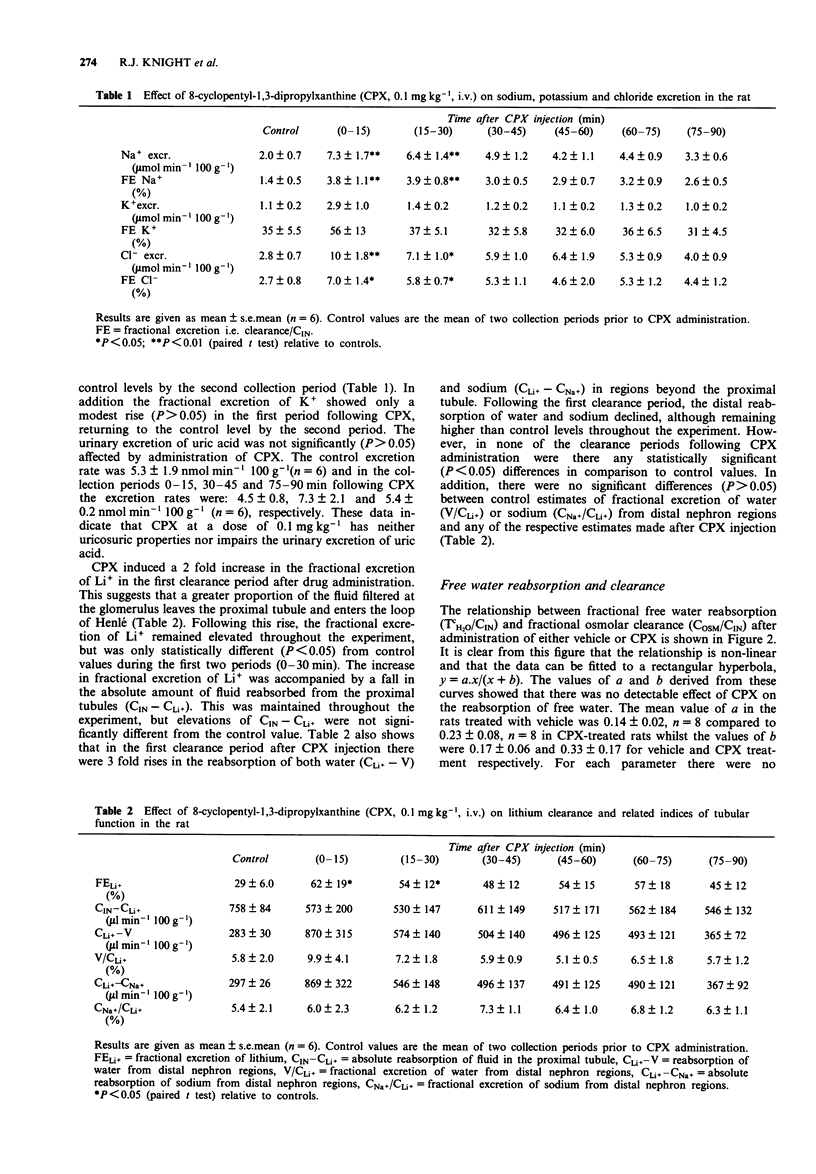
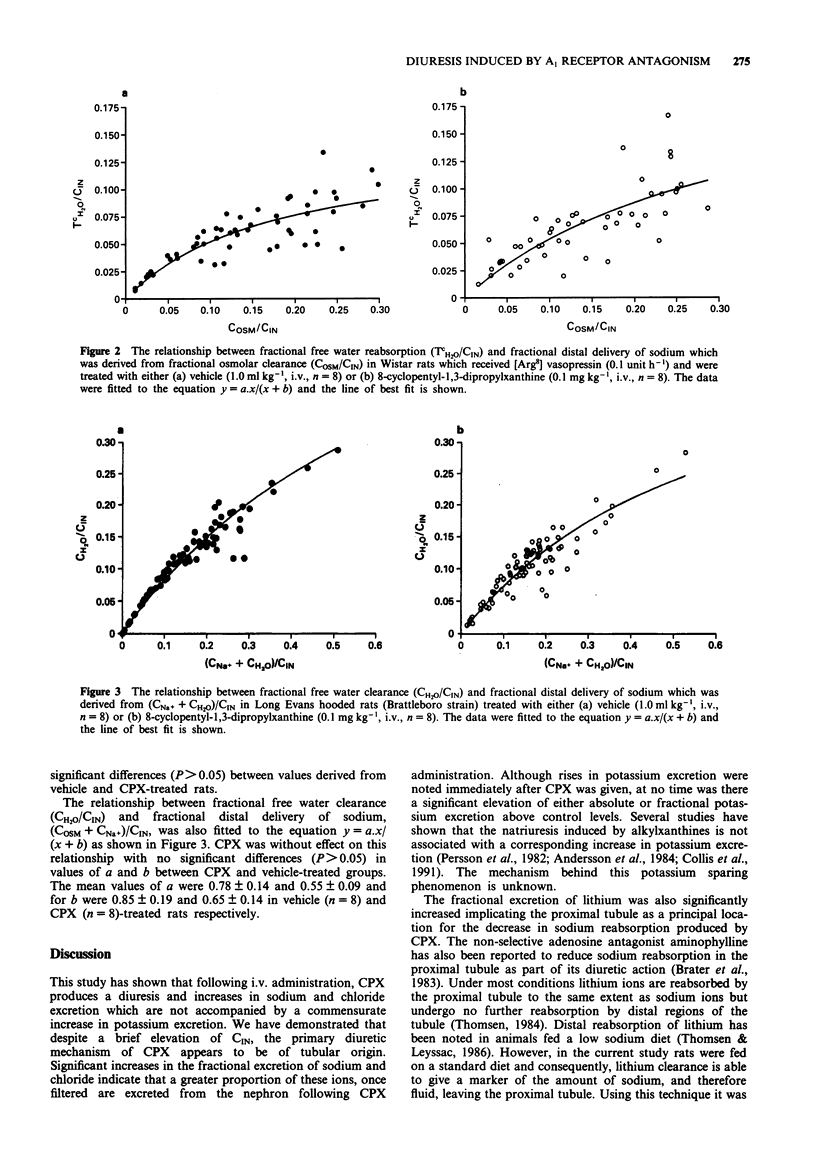
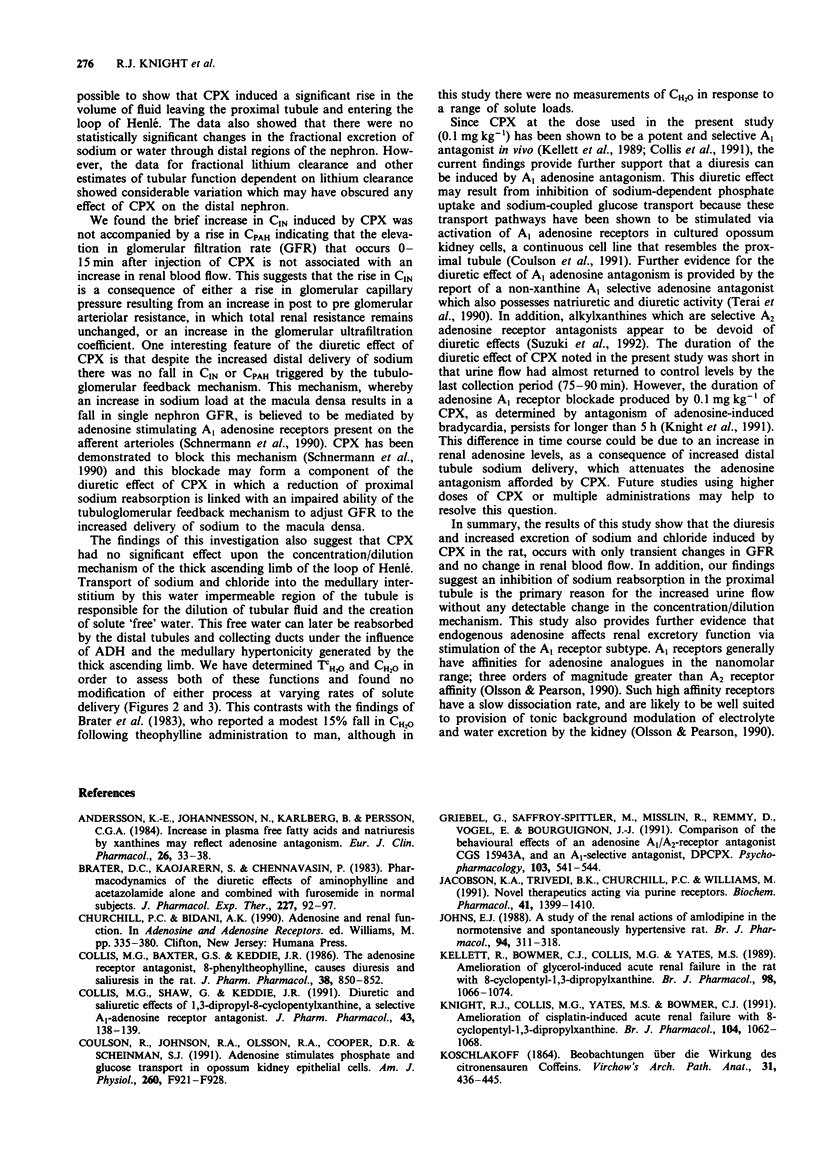
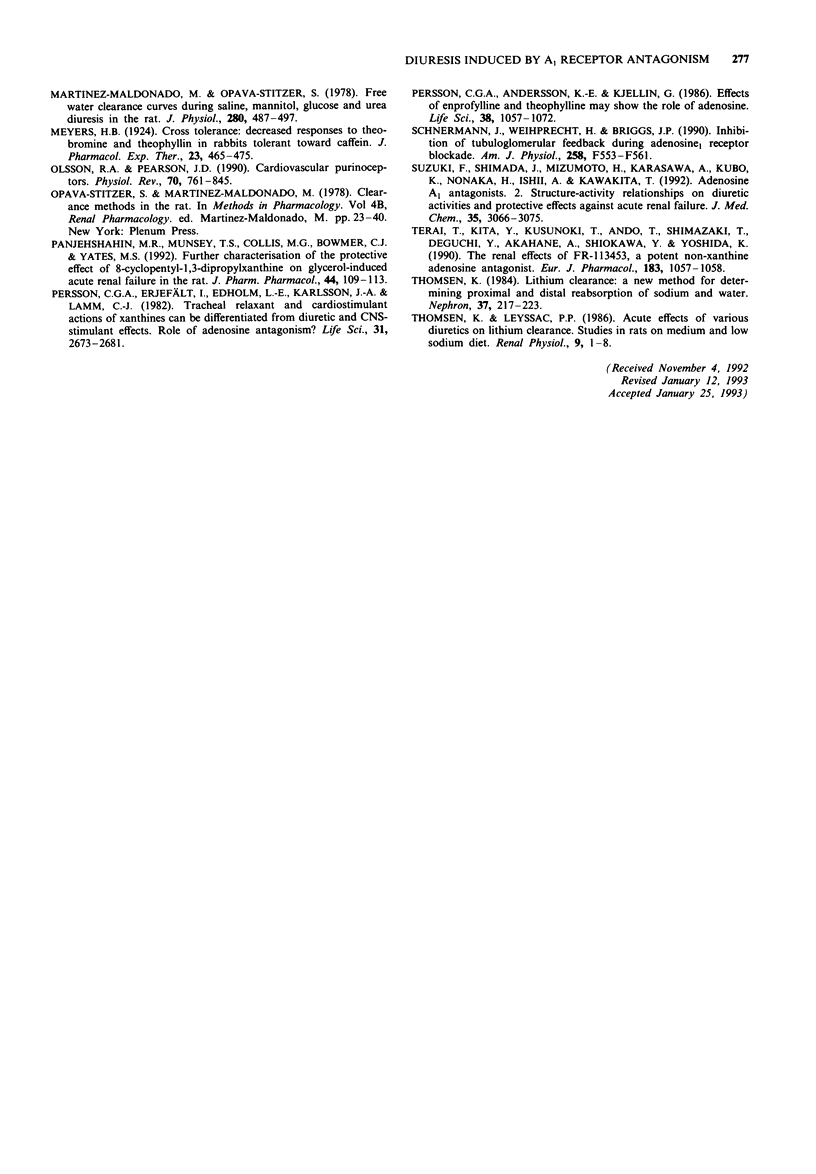
Selected References
These references are in PubMed. This may not be the complete list of references from this article.
- Andersson K. E., Johannesson N., Karlberg B., Persson C. G. Increase in plasma free fatty acids and natriuresis by xanthines may reflect adenosine antagonism. Eur J Clin Pharmacol. 1984;26(1):33–38. doi: 10.1007/BF00546705. [DOI] [PubMed] [Google Scholar]
- Brater D. C., Kaojarern S., Chennavasin P. Pharmacodynamics of the diuretic effects of aminophylline and acetazolamide alone and combined with furosemide in normal subjects. J Pharmacol Exp Ther. 1983 Oct;227(1):92–97. [PubMed] [Google Scholar]
- Collis M. G., Baxter G. S., Keddie J. R. The adenosine receptor antagonist, 8-phenyltheophylline, causes diuresis and saliuresis in the rat. J Pharm Pharmacol. 1986 Nov;38(11):850–852. doi: 10.1111/j.2042-7158.1986.tb04510.x. [DOI] [PubMed] [Google Scholar]
- Collis M. G., Shaw G., Keddie J. R. Diuretic and saliuretic effects of 1,3-dipropyl-8-cyclopentylxanthine, a selective A1-adenosine receptor antagonist. J Pharm Pharmacol. 1991 Feb;43(2):138–139. doi: 10.1111/j.2042-7158.1991.tb06651.x. [DOI] [PubMed] [Google Scholar]
- Coulson R., Johnson R. A., Olsson R. A., Cooper D. R., Scheinman S. J. Adenosine stimulates phosphate and glucose transport in opossum kidney epithelial cells. Am J Physiol. 1991 Jun;260(6 Pt 2):F921–F928. doi: 10.1152/ajprenal.1991.260.6.F921. [DOI] [PubMed] [Google Scholar]
- Griebel G., Saffroy-Spittler M., Misslin R., Remmy D., Vogel E., Bourguignon J. J. Comparison of the behavioural effects of an adenosine A1/A2-receptor antagonist, CGS 15943A, and an A1-selective antagonist, DPCPX. Psychopharmacology (Berl) 1991;103(4):541–544. doi: 10.1007/BF02244256. [DOI] [PubMed] [Google Scholar]
- Jacobson K. A., Trivedi B. K., Churchill P. C., Williams M. Novel therapeutics acting via purine receptors. Biochem Pharmacol. 1991 May 15;41(10):1399–1410. doi: 10.1016/0006-2952(91)90555-j. [DOI] [PMC free article] [PubMed] [Google Scholar]
- Johns E. J. A study of the renal actions of amlodipine in the normotensive and spontaneously hypertensive rat. Br J Pharmacol. 1988 Jun;94(2):311–318. doi: 10.1111/j.1476-5381.1988.tb11532.x. [DOI] [PMC free article] [PubMed] [Google Scholar]
- Kellett R., Bowmer C. J., Collis M. G., Yates M. S. Amelioration of glycerol-induced acute renal failure in the rat with 8-cyclopentyl-1,3-dipropylxanthine. Br J Pharmacol. 1989 Nov;98(3):1066–1074. doi: 10.1111/j.1476-5381.1989.tb14639.x. [DOI] [PMC free article] [PubMed] [Google Scholar]
- Knight R. J., Collis M. G., Yates M. S., Bowmer C. J. Amelioration of cisplatin-induced acute renal failure with 8-cyclopentyl-1,3-dipropylxanthine. Br J Pharmacol. 1991 Dec;104(4):1062–1068. doi: 10.1111/j.1476-5381.1991.tb12550.x. [DOI] [PMC free article] [PubMed] [Google Scholar]
- Martinez-Maldonado M., Opava-Stitzer S. Free water clearance curves during saline, mannitol, glucose and urea diuresis in the rat. J Physiol. 1978 Jul;280:487–497. doi: 10.1113/jphysiol.1978.sp012396. [DOI] [PMC free article] [PubMed] [Google Scholar]
- Olsson R. A., Pearson J. D. Cardiovascular purinoceptors. Physiol Rev. 1990 Jul;70(3):761–845. doi: 10.1152/physrev.1990.70.3.761. [DOI] [PubMed] [Google Scholar]
- Panjehshahin M. R., Munsey T. S., Collis M. G., Bowmer C. J., Yates M. S. Further characterization of the protective effect of 8-cyclopentyl-1,3-dipropylxanthine on glycerol-induced acute renal failure in the rat. J Pharm Pharmacol. 1992 Feb;44(2):109–113. doi: 10.1111/j.2042-7158.1992.tb03572.x. [DOI] [PubMed] [Google Scholar]
- Persson C. G., Andersson K. E., Kjellin G. Effects of enprofylline and theophylline may show the role of adenosine. Life Sci. 1986 Mar 24;38(12):1057–1072. doi: 10.1016/0024-3205(86)90241-9. [DOI] [PubMed] [Google Scholar]
- Persson C. G., Erjefält I., Edholm L. E., Karlsson J. A., Lamm C. J. Tracheal relaxant and cardiostimulant actions of xanthines can be differentiated from diuretic and CNS-stimulant effects. Role of adenosine antagonism? Life Sci. 1982 Dec 13;31(24):2673–2681. doi: 10.1016/0024-3205(82)90711-1. [DOI] [PubMed] [Google Scholar]
- Schnermann J., Weihprecht H., Briggs J. P. Inhibition of tubuloglomerular feedback during adenosine1 receptor blockade. Am J Physiol. 1990 Mar;258(3 Pt 2):F553–F561. doi: 10.1152/ajprenal.1990.258.3.F553. [DOI] [PubMed] [Google Scholar]
- Suzuki F., Shimada J., Mizumoto H., Karasawa A., Kubo K., Nonaka H., Ishii A., Kawakita T. Adenosine A1 antagonists. 2. Structure-activity relationships on diuretic activities and protective effects against acute renal failure. J Med Chem. 1992 Aug 7;35(16):3066–3075. doi: 10.1021/jm00094a022. [DOI] [PubMed] [Google Scholar]
- Thomsen K., Leyssac P. P. Acute effects of various diuretics on lithium clearance. Studies in rats on medium and low sodium diet. Ren Physiol. 1986;9(1-2):1–8. [PubMed] [Google Scholar]
- Thomsen K. Lithium clearance: a new method for determining proximal and distal tubular reabsorption of sodium and water. Nephron. 1984;37(4):217–223. doi: 10.1159/000183252. [DOI] [PubMed] [Google Scholar]


